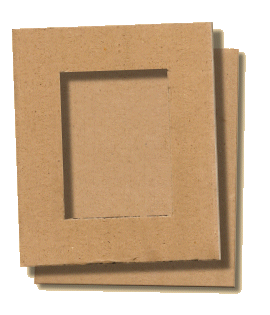How to display Artist Trading Cards
How can I display my artist trading cards?
In the third part of our look at how to make artist trading cards, we talked about some of the more conventional ways to store and display your ATC collection. Here's a reminder of what we said.
You'll need a storage system that will protect the cards from handling and direct sunlight, keep your collection together and make it easily accessible whenever you want to look at it.
You can make your own, but there are also a number of commercially available products that will do the job. For individual artist trading cards there are transparent card sleeves, and also albums and album pages that will fit standard A4 ring binders. Suitable albums typically contain about ten transparent pages with pockets to hold either four or nine ATCs per page, whilst each album page will take nine cards.
Since artist trading cards are the same size as standard trading cards, you may be able to find transparent sleeves, albums and pages in shops and on websites that deal in this type of collectible, or perhaps at multiple stationers and some bookshops.
Looking for a new way to display artist trading cards?
Here's another great way to display artist trading cards that a friend told us about. It's an attractive ATC frame that's ideal for showing off your favourite artist trading card. You can make it using only your usual art and craft supplies, and waste materials often found around the house.
If you'd like to try making this simple altered art project you'll need:
- Corrugated card, 2-3 mm (⅛") thick
- Corrugated card, 6-8 mm (¼") thick
- Craft knife
- Steel (or steel-edged) ruler
- Newspaper
- Tissue paper
- Gesso
- PVA glue
- Mod Podge® (or watered-down PVA glue)
- Paints, inks etc. for decoration
- Embellishments
You'll need the sturdier type of corrugated card that's faced on both sides, and will probably also find that the thicker kind is double-layered. Cut the front and back of the frame from the thicker and thinner types of cardboard respectively.

The aperture in the front of the frame is slightly larger than the standard artist trading card size of 2½ by 3½ inches (64 mm x 89 mm) to allow for its being reduced as the frame is built up. We allowed an extra 3mm all round. You then need to increase the outside dimensions on all sides by the frame width that you would like. We chose 30 mm (about 1¼") for our example, giving an overall size of 130 x 155 mm (about 5" x 6").
The back of the frame is the same size as the front, but doesn't have that aperture in the middle.
Click on the reduced size template for the full-size version that we used for our example.
Stick the two pieces of corrugated card together with PVA glue, and then cover the whole frame with pieces of torn newspaper and Mod Podge®. Finish with a final layer of tissue paper and Mod Podge®, gently easing the tissue into the corners of the aperture.

It doesn't matter if the tissue is a little wrinkled, as this can add an interesting texture to the finished work. Leave the frame to dry completely.
Cover the entire surface with gesso, using an old credit card to spread it thinly and evenly. Gesso is a white material, similar to plaster, that accepts paint and inks easily. You can smooth it with a crafter's sanding block, or you may prefer to leave it slightly rough.
You should be able to obtain gesso at shops that sell artists' materials. It can also be found in more and more craft stores.
When the gesso is dry, all that's left to do is to decorate and embellish your artist trading card frame. We would recommend acrylic paints as most suitable for this purpose, but there are several other types of paints and inks that you could use, depending on the effect that you wish to achieve.
Some embellishments that you may like to try are:
- Printed or stamped images
- Torn papers
- Tickets
- Ultra-thick embossing enamel (UTEE)
- Polymer clay
- Paper clay
- Shrink plastic
- Friendly Plastic®
- Glass pebbles
- Keys
- Watch parts
- Bottle caps
- Coins
- Scrabble® tiles
- Dominoes
- Shells
- Postage stamps
- Press studs (snaps)
- Decorative paper clips
- Buttons
- Beads
- Sequins
- Punchinella (sequin waste)
- Charms
- Gems
- Lace
- Fabric
- Ribbons and fibres
We hope that we have given you a few ideas about how to display artist trading cards, and maybe inspired you to try making your own artist trading card frame.
Altered Art Home » Artist Trading Cards » Display Artist Trading Cards


Enjoyed your visit? Why not leave a comment?